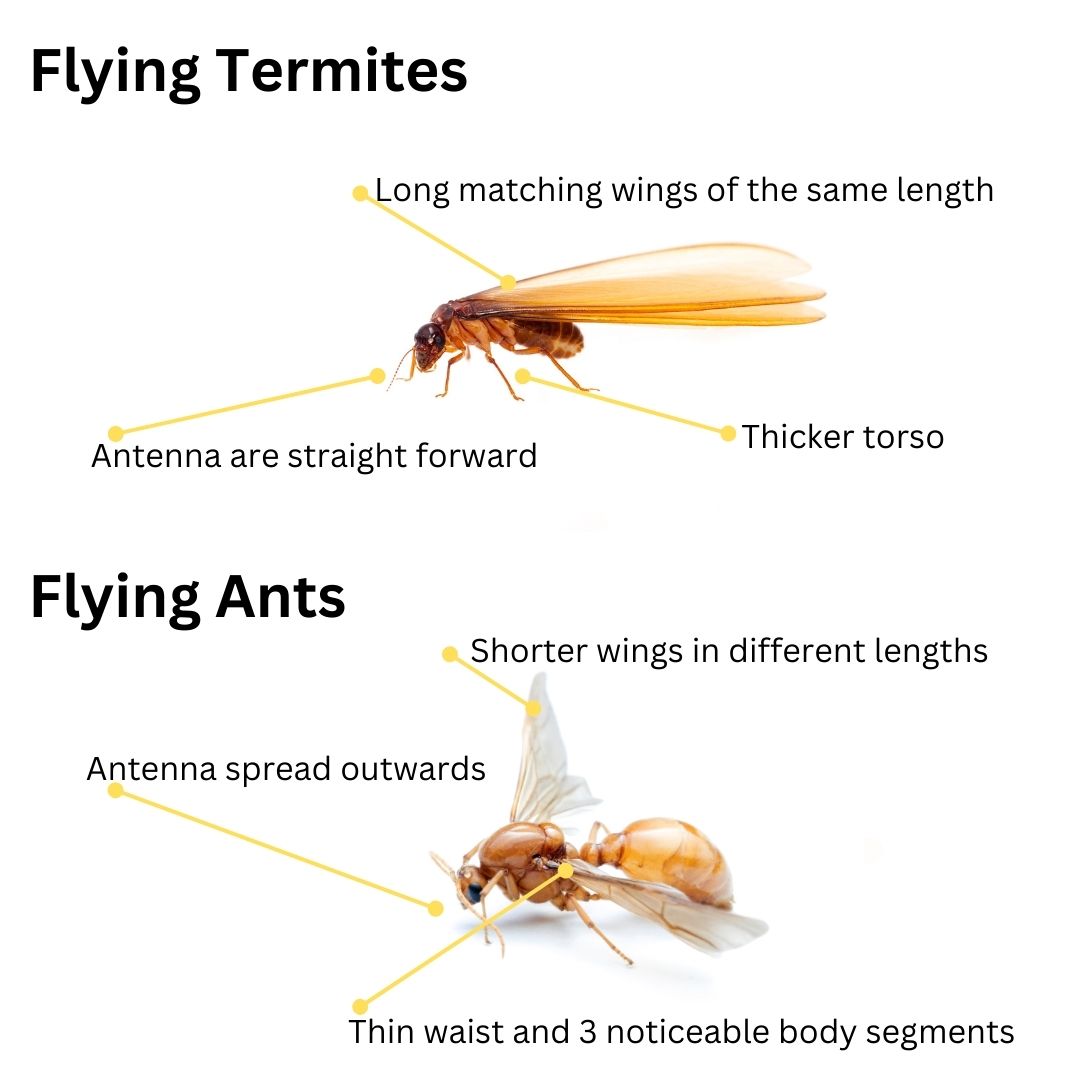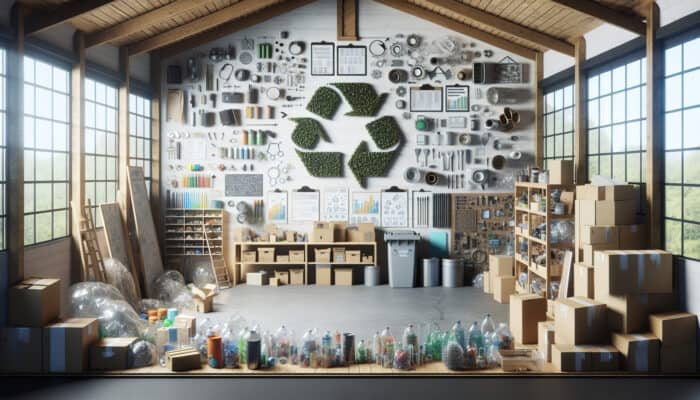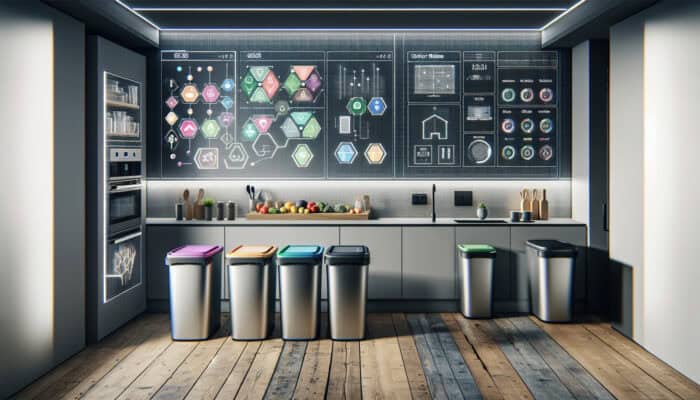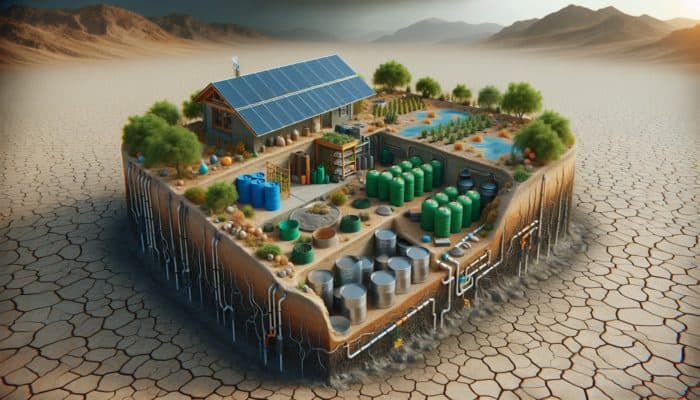Key Materials for Creating Eco-Friendly Meal Prep Containers
Diving Into the Variety of Compostable Materials Available
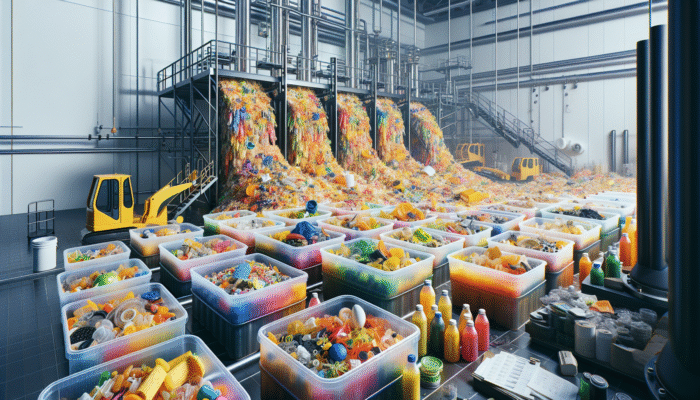
The creation of compostable meal prep containers requires a thorough understanding of the diverse materials available in the current marketplace. Among the most favored options among manufacturers is PLA (polylactic acid), derived from renewable resources like corn starch. Known for its exceptional strength and clarity, PLA is an excellent choice for meal containers, being a biodegradable thermoplastic. However, it is important to note that while PLA can compost effectively in industrial settings, it may not break down as efficiently in home composting systems. Understanding this difference is vital for sustainability efforts, emphasizing the need for careful selection of materials.
A notable alternative is starch-based polymers, which offer a sustainable solution for environmentally-conscious consumers. These materials are sourced from natural starches, resulting in a biodegradable product that decomposes effectively in both industrial and home composting environments. Containers made from starch-based polymers often boast multifunctional designs, allowing for various shapes that cater to a wide range of meal prep needs, enhancing their usability and appeal.
Furthermore, bamboo fibres have emerged as a popular choice in sustainable materials due to their renewable and biodegradable properties. Containers made from bamboo are lightweight yet sturdy, presenting a natural look that resonates with eco-conscious consumers. They stand out in the compostable container market, particularly appealing to individuals looking to reduce plastic consumption and contribute positively to the environment.
Choosing the right material is crucial, as each type comes with distinct characteristics that impact usability, cost, and compostability. When selecting materials for your containers, it is essential to evaluate their performance under various conditions and their ability to meet consumer demands for sustainability and environmental awareness.
Finding Reliable Suppliers for Compostable Materials
Locating dependable suppliers of compostable materials can be a challenging yet vital task. A variety of organizations now provide eco-friendly options in response to the increasing demand for sustainable products. Online platforms like Alibaba and specialized suppliers such as Biopak offer a range of compostable materials, including PLA and starch-based polymers. These suppliers generally hold sustainability certifications and can guide you in choosing the most suitable products tailored to your specific needs.
Moreover, local manufacturers may offer sustainable alternatives that help reduce transportation emissions. Partnering with nearby suppliers not only supports the local economy but also fosters a community of businesses committed to minimizing environmental impacts. Companies like Vegware have built solid reputations within the sustainable packaging sector, providing high-quality compostable materials to clients worldwide.
Networking at trade shows and sustainability expos can create valuable connections with suppliers focused on eco-friendly solutions. As you explore sourcing opportunities, prioritize suppliers that demonstrate transparency in their material sourcing and production processes, ensuring they align with your brand’s sustainability mission.
Evaluating the Financial Considerations of Compostable Materials
Gaining insight into the financial aspects associated with producing compostable meal prep containers is essential for crafting a successful business strategy. Generally, compostable materials often come with higher costs compared to traditional plastics, yet the long-term environmental benefits and marketing advantages can far exceed the initial expenses. For example, the cost of PLA can fluctuate significantly based on its quality and supplier, making it crucial to compare options and negotiate bulk purchasing agreements to secure the best pricing.
Additionally, it is important to account for the overall production costs tied to machinery, labor, and overhead associated with compostable materials, which may necessitate different handling methods compared to standard plastics. While some compostable materials may appear to offer lower upfront costs, they could incur higher end-of-life processing expenses if not composted correctly, ultimately affecting overall profitability.
Conducting a thorough cost-benefit analysis is recommended to identify the most economically viable materials and production methods while ensuring product quality remains uncompromised. This evaluation can assist you in competitively pricing your compostable meal prep containers while maintaining profitability. Additionally, incorporating sustainability into your brand ethos can justify a higher price point, appealing to eco-conscious consumers who are willing to invest in environmentally-friendly products.
Advancing Design and Moulding Techniques for Compostable Meal Prep Containers
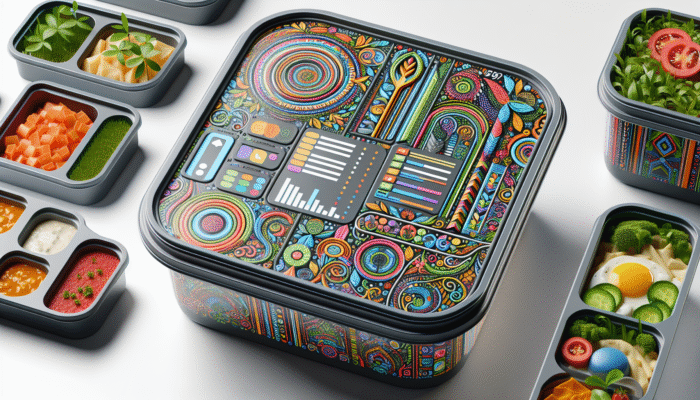
Boosting User Experience Through Innovative Container Design
Creative design plays a pivotal role in the success of compostable meal prep containers. During the design process, it is critical to consider functional elements such as size, shape, and usability while also striving for an aesthetic that resonates with eco-conscious consumers. Developing stackable containers can significantly enhance storage and transport efficiency, contributing to a reduced carbon footprint associated with logistics and distribution.
Employing advanced software like CAD (Computer-Aided Design) facilitates the creation of precise prototypes that can be tested for functionality and consumer preferences. Involving potential customers during the design phase through surveys or focus groups can yield invaluable feedback, ensuring the final product aligns with market needs and expectations.
Incorporating innovative features, such as compartments for separating different meal components, can substantially enhance user satisfaction and overall experience. Additionally, consider the branding aspect; integrating design elements that reflect the sustainability ethos of your product can forge a stronger bond with consumers. Utilizing biodegradable inks and natural fibres for labels and packaging reinforces the eco-friendly narrative and adds to the overall appeal of your containers.
Keep in mind that the design phase also presents an opportunity to differentiate your product in a competitive market. Collaborating with designers who specialize in sustainable packaging can unlock creative solutions that resonate with your target audience, ensuring your containers not only perform effectively but also convey a compelling narrative about sustainability and environmental responsibility.
Selecting the Best Moulding Techniques for Efficient Production
Determining the right moulding technique is crucial for the efficient production of compostable meal prep containers. Various methods, including injection moulding, blow moulding, and thermoforming, each offer unique advantages tailored to specific requirements. For instance, injection moulding provides precise control over the shape and thickness of the container, resulting in high-quality products suitable for various meal types.
Thermoforming is another effective method, particularly for materials like PLA and starch-based polymers. This technique excels at producing shallow containers and trays commonly used in meal prep. It involves heating a sheet of compostable material until pliable and then forming it over a mould to achieve the desired shape. Thermoformed containers typically exhibit a smooth finish and can be manufactured in various sizes to accommodate different meal portions.
When selecting your moulding technique, consider scalability. Investing in versatile equipment that can handle multiple materials and designs will enable quicker adaptation to market demands. Additionally, conducting tests on various techniques during the prototyping phase can help identify the best fit for your product, ensuring that functionality and sustainability are prioritized throughout the manufacturing process.
Ensuring Durability and Strength in Compostable Containers

Durability is an essential characteristic of compostable meal prep containers, as they must endure various conditions, including temperature variations and transport stresses. Opting for high-quality compostable materials can enhance the longevity of your containers while ensuring functionality throughout their intended use, which is vital for customer satisfaction and brand loyalty.
Conducting comprehensive testing is crucial to validate that your containers perform reliably under real-world conditions. This may involve stress tests to evaluate their resilience under pressure or analyzing their resistance to moisture and oils, common challenges in meal prep environments. Establishing performance standards and benchmarks for your containers can guide your production process and ensure quality control.
Incorporating design elements that enhance structural integrity, such as ribbing or reinforced edges, can improve durability without compromising compostability. Collaborating with engineers or materials scientists can provide valuable insights into effective design modifications that maintain your containers' eco-friendly nature while enhancing usability and strength.
Finally, educating consumers on the proper handling and use of compostable containers can significantly extend their lifecycle. Providing clear instructions on storage, reheating, and disposal will improve customer satisfaction and ensure they recognize the value of choosing compostable options over traditional plastics, thereby promoting a more sustainable lifestyle.
Streamlining the Manufacturing Process for Compostable Meal Prep Containers
Creating a High-Performance Production Line
Establishing a production line for compostable meal prep containers requires meticulous planning and investment in appropriate equipment. The first step is to assess your production scale. A small-scale operation may only need basic machinery, while a larger enterprise might require automated systems to meet increasing demand effectively.
Once the scale is defined, identifying suitable machinery becomes imperative. This includes injection moulding machines for high-volume production and thermoforming equipment for a diverse range of container shapes. Integrating a conveyor system can significantly enhance the manufacturing workflow, improving efficiency from material intake to finished product packaging.
Next, optimizing your workspace design to facilitate an efficient workflow is essential. Ensuring materials move seamlessly from one station to another can minimize bottlenecks and increase production rates. Establishing clear procedures for quality control checks throughout the manufacturing process will help maintain product standards and reduce waste, guaranteeing a reliable output.
Investing in employee training is equally important. A knowledgeable workforce that understands the intricacies of working with compostable materials and machinery will contribute to improved output quality and operational efficiency. Regular maintenance of equipment is crucial for ensuring longevity and reliability, preventing costly downtimes that could disrupt production schedules.
Implementing Comprehensive Quality Control Protocols
Quality control is essential to ensure your compostable meal prep containers meet necessary compostability standards. Establishing a robust quality management system will help maintain consistent quality throughout the production process. This includes regular inspections of incoming materials, in-line checks during manufacturing, and comprehensive evaluations of final products.
Testing for compliance with compostability standards, such as ASTM D6400 or EN 13432, is crucial. Conducting both laboratory tests and field trials can provide insights into how well your containers perform in actual composting conditions. Partnering with accredited testing facilities can streamline this process, ensuring that your products consistently meet industry requirements and consumer expectations.
Additionally, establishing a feedback mechanism promotes continuous improvement. Engaging with customers and suppliers to gather insights will help identify areas needing enhancement, whether related to material selection or container design. Implementing a systematic approach to quality control not only builds consumer trust but also positions your brand as a leader in the compostable packaging sector.
Routine audits of your production processes can help identify inefficiencies and areas for improvement. Promoting a culture of quality among your team will encourage accountability and dedication to product excellence, ultimately leading to more durable and effective compostable meal prep containers that cater to customer needs.
Effective Strategies for Scaling Production
Scaling the production of compostable meal prep containers requires strategic planning and investment. Start by assessing your current production capacity concerning market demand. Conducting thorough market analysis can reveal trends and potential growth opportunities, guiding your scaling efforts effectively.
Investing in technology that supports increased production volumes is critical. Upgrading machinery or incorporating automation can enhance efficiency and reduce labor costs. For instance, automating the filling and sealing processes of containers can significantly speed up production times, allowing you to meet the rising consumer demand for eco-friendly solutions.
As you scale, consider diversifying your product line. Introducing various designs, sizes, and functionalities can attract a broader audience while tapping into different market segments. Forming collaborations with distribution partners can facilitate entry into new markets, further expanding your reach and boosting sales.
Monitoring production quality during the scaling process is vital to maintaining high standards. Ensuring that your team is adequately trained to manage increased volumes without compromising quality will be critical to your success. Regularly evaluating your production rates and adjusting your strategies accordingly will help you keep pace with the evolving market for compostable meal prep containers while meeting customer expectations.
Understanding Compostability Standards for Meal Prep Containers
Understanding the Basics of Compostability
Grasping the concept of compostability is essential for anyone aiming to create effective compostable meal prep containers. Compostable products are specifically designed to decompose into natural, non-toxic elements within a composting environment, leaving no harmful residues behind. The fundamental principles of compostability revolve around a material's ability to break down within a defined timeframe and under specific environmental conditions.
To qualify as compostable, materials must comply with established standards such as ASTM D6400 or EN 13432. These standards outline the conditions under which a product must decompose, including required temperature, moisture, and microbial activity levels. Familiarizing yourself with these benchmarks is crucial for successfully developing your containers.
It is also vital to distinguish between biodegradable and compostable materials. While all compostable materials are biodegradable, not all biodegradable materials meet compostability criteria. For instance, certain plastics may break down under specific conditions, but they might leave behind microplastics, which undermine ecological benefits. Understanding these distinctions is critical for creating genuinely sustainable products that align with environmental objectives.
Integrating educational content about compostability into your marketing strategy can further engage eco-conscious consumers. Providing clear information regarding appropriate disposal methods for your containers will help consumers appreciate the significance of composting, ultimately contributing to reduced landfill waste and a cleaner, healthier environment for everyone.
The Certification Process for Compostable Products
Obtaining certifications for your compostable meal prep containers is a critical step in establishing market credibility. Certification serves as a guarantee to consumers that your products meet stringent compostability standards. The process typically involves submitting samples of your containers to a recognized testing organization for thorough evaluation and validation.
The most common certifications include ASTM D6400 in the United States and EN 13432 in Europe. These standards require materials to decompose within a designated timeframe, usually between 90 to 180 days, in commercial composting facilities. Based on your target market, pursuing certification from local or international bodies can enhance your brand's reputation and appeal to environmentally conscious consumers seeking verified sustainable products.
Highlighting any additional certifications related to sustainability, such as FSC (Forest Stewardship Council) for paper products or certifications pertaining to responsible sourcing, can further bolster your marketing efforts. These endorsements reinforce your commitment to sustainability and position your compostable containers as a responsible choice for consumers.
Furthermore, maintaining open communication with your certification bodies is crucial for staying informed about evolving standards and testing requirements. This diligence ensures your products remain compliant and competitive in the marketplace. Ultimately, obtaining certifications represents an investment in your brand that can yield long-term benefits in consumer trust and market share.
Assessing the Environmental Impact of Compostable Containers
The environmental impact of choosing compostable containers over traditional plastic alternatives is significant and multifaceted. Compostable materials help reduce landfill waste, as they decompose into nutrient-rich compost rather than persisting in the environment for centuries, as conventional plastics do. This natural decomposition process not only diminishes waste volume but also enriches the soil, promoting healthier ecosystems and supporting sustainable agriculture.
Research indicates that compostable products can help mitigate greenhouse gas emissions. When organic waste decomposes anaerobically in landfills, it generates methane, a potent greenhouse gas that exacerbates climate change. In contrast, composting occurs in the presence of oxygen, minimizing harmful gas emissions while returning valuable nutrients to the earth, thereby supporting a circular economy.
Additionally, producing compostable materials generally requires less energy than traditional plastics. Sourcing renewable resources like cornstarch or bamboo reduces reliance on fossil fuels and aligns with global initiatives to combat climate change. By investing in compostable meal prep containers, businesses not only cater to eco-conscious consumers but also actively contribute to a more sustainable future for all.
Highlighting these environmental benefits in your marketing materials can resonate deeply with consumers who are increasingly concerned about sustainability. Educating your audience about the positive impacts of choosing compostable options over traditional packaging can enhance your brand’s reputation as a leader in the fight against plastic pollution and environmental degradation.
Locating Suitable Composting Facilities
Identifying appropriate composting facilities is crucial for ensuring the effective breakdown of your compostable meal prep containers. Various types of composting facilities exist, ranging from municipal composting programs to private commercial operations. Understanding their requirements and capabilities will effectively guide your product marketing and distribution strategies.
Municipal composting facilities typically operate under strict regulations, processing organic waste from households and businesses. These facilities often have the capacity to manage larger volumes of compostable products but may require specific material certifications. Engaging with local government can provide insight into available composting options that accept your containers, ensuring proper disposal and environmental compliance.
Private composting operations may offer more flexibility regarding the acceptance of diverse materials, including those made from PLA and starch-based polymers. Collaborating with these facilities can create opportunities for partnerships that promote sustainability and may offer recycling incentives for businesses utilizing compostable products, fostering a more circular economy.
Educating consumers about proper disposal methods is equally important. Providing clear labeling and disposal instructions on your containers can guide users to the correct composting facilities, ensuring effective decomposition. This not only enhances the end-user experience but also reinforces your brand's commitment to sustainability, encouraging customers to make environmentally responsible choices that contribute to a healthier planet.
Navigating Regulatory Compliance for Compostable Products
Navigating the regulatory landscape for compostable products can be complex, yet it is vital for ensuring your compostable meal prep containers meet legal requirements. Different regions have varying laws governing compostable materials, which may include labeling requirements and specific compostability standards.
To ensure compliance, it’s important to stay informed about regulations within your target markets. Engaging with industry associations like the Biodegradable Products Institute (BPI) can provide valuable insights into evolving legislation and best practices for compliance. These organizations often offer guidelines and resources that can assist in navigating the regulatory challenges associated with compostable products.
Furthermore, maintaining transparency with consumers regarding your compliance efforts fosters trust. Providing clear documentation and certifications that validate the compostability of your products can enhance your brand image and demonstrate your commitment to sustainability.
Regularly auditing your manufacturing processes to ensure adherence to regulatory standards is essential. Establishing an internal compliance team that monitors changes in legislation will help your business adapt proactively, mitigating potential risks associated with non-compliance and ensuring your products remain market-ready.
Strategic Marketing for Compostable Meal Prep Containers
Identifying Your Target Demographic for Effective Marketing
Identifying the right target demographic for your compostable meal prep containers is crucial for crafting effective marketing strategies. Begin by analyzing consumer demographics that prioritize sustainability, particularly millennials and Generation Z, who demonstrate a growing inclination to choose eco-friendly products. Research suggests that these groups are more inclined to invest in sustainable options, making them prime targets for your marketing initiatives.
Understanding consumer behavior and preferences can significantly assist in tailoring your messaging. For instance, health-conscious individuals may seek meal prep solutions that align with their lifestyles, while environmentally-focused consumers will appreciate the sustainability aspect of your containers. Developing targeted campaigns that resonate with these segments can enhance engagement and notably improve conversion rates.
Utilizing social media platforms offers an effective avenue to connect with your audience and build a community around your brand. Platforms like Instagram and Facebook enable you to visually showcase your products while engaging consumers through compelling storytelling. Highlighting the journey of your containers, from material sourcing to the composting process, can create a meaningful connection with your audience and foster brand loyalty.
Conducting surveys or focus groups can deepen your understanding of your target demographic. Gathering insights into their expectations, motivations, and pain points can help refine your marketing strategies and product offerings, ensuring that you meet their needs while effectively promoting your compostable meal prep containers.
Creating an Eco-Conscious Brand Identity
Building an eco-friendly brand identity is fundamental when marketing your compostable meal prep containers. Your branding should clearly reflect your commitment to sustainability, emphasizing the eco-conscious nature of your products. Design elements such as earthy color palettes and natural imagery can evoke a sense of environmental responsibility and appeal to consumers seeking sustainable options.
Incorporating storytelling into your branding can further enhance consumer engagement. Sharing the narrative behind your materials, production processes, and the positive impacts of composting can resonate deeply


